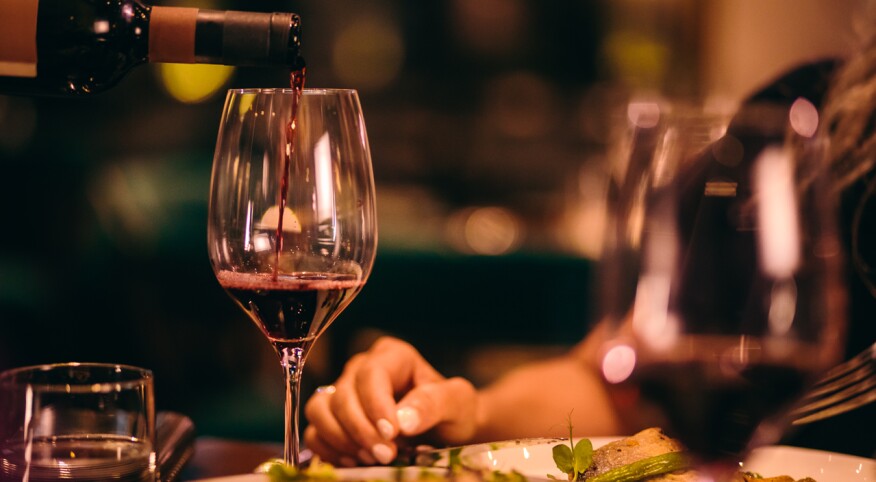Few things strike more panic into a man than being at a restaurant with friends when somebody nominates you to choose a wine for the table. It doesn’t matter whether you’ve got any vino knowledge — I’ve been a wine judge at international competitions, and I have a 400-bottle cellar, but lengthy wine lists still make my eyes bleed and my brain numb.
Here are the fundamentals to help escape this nightmarish scenario with your dignity intact.
The fundamentals
• There are four to six glasses per bottle (depending on the size of the pour).
• Most wines from Europe are named after the region they’re from (i.e. Burgundy, Bordeaux…), whereas wines from most of the rest of the world are named after their varietal (chardonnay, merlot…).
• Restaurant wines are marked up an average of 300% — and they intentionally choose wines most people are unfamiliar with, so you won’t be aware of the markup.
• The average drinker can’t tell a cheap wine from an expensive one. A U.K. study determined that the tasters had a 50:50 success rate of identifying a wine as expensive or cheap based on taste alone — the same odds as flipping a coin. Moral of the study: Always err on the low end of the price list.
Read the room: Are your friends looking for a wine experience or simply a pleasant wine to accompany dinner? How deep are their pockets (assuming you are splitting the tab evenly)? How many bottles do you think the table will drink?
Divide and conquer: The first bottle usually gets hoovered back pretty quickly with the initial chitchat and appetizers. Buy yourself some time by making a quick decision about a crowd-pleasing, food-friendly wine to start the night. Your get out of jail free cards are a rosé or a sparkling wine (prosecco, cava, lambrusco).
Be a matchmaker: Certain varietals really are better suited to particular foods. Focus your efforts on choosing the right varietals that will pair harmoniously with the food your friends have ordered. Successful pairings are based on levels of acidity, tannins and boldness. No time to study up? Use the cheat list below:
Wines that pair well with a mix of fish, chicken and vegetarian dishes
No-fail choices: Italian Pinot Grigio, New Zealand Sauvignon Blanc.
Upgrade: Chablis (a dry French Chardonnay)
Wines that pair well with a mix of meat dishes
No-fail choices: Argentinian Malbec, Côtes du Rhône (a Ganache, Syrah, Mourvèdre blend)
Upgrade: Napa Cab
Wines that pair well with a mix of mix of fish, chicken, vegetarian and meat dishes
No-fail choices: Merlot (it’s back!), Italian Barbera
Upgrade: Italian Nebbiolo
Wines that pair well with just about any pasta dish or pizza
No-fail choices: Chianti (sangiovese grape), a Sicilian Nero d'Avola
Upgrade: Italian Borolo
The slam-dunk wine for oysters
Sancerre
Two go-to wines that will get you out of any situation and earn you respect
No-fail choice: Californian pinot noir
Upgrade: A Cru Beaujolais (The Gamay grape, a.k.a. the poor man’s Burgundy)
When in doubt
• Bet with the house. As a general rule, house wines that are sold by the glass and bottle are selected for their good value and compatibility with the restaurant’s food.
• Point to a wine you are afraid of mispronouncing (commonly cited by sommeliers as a main reason many great value wines are never ordered).
• Telegraph your desired price range by asking for a suggestion as you point to a wine on the list in your price range and say you are interested in “a wine like this.”

Getty Images
Follow Article Topics: Eating-&-Drinking




